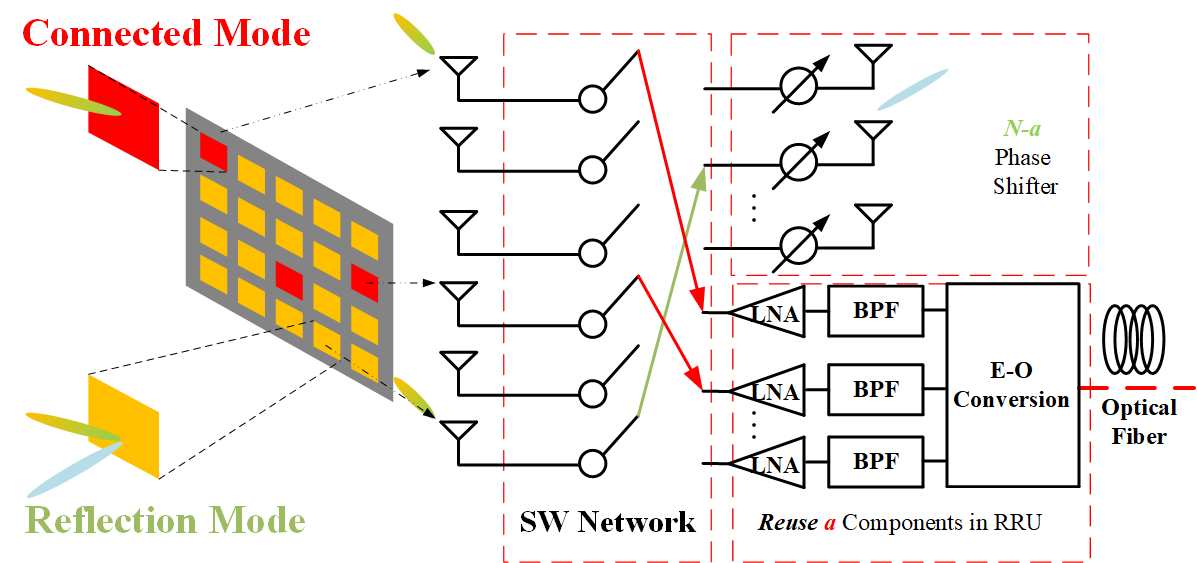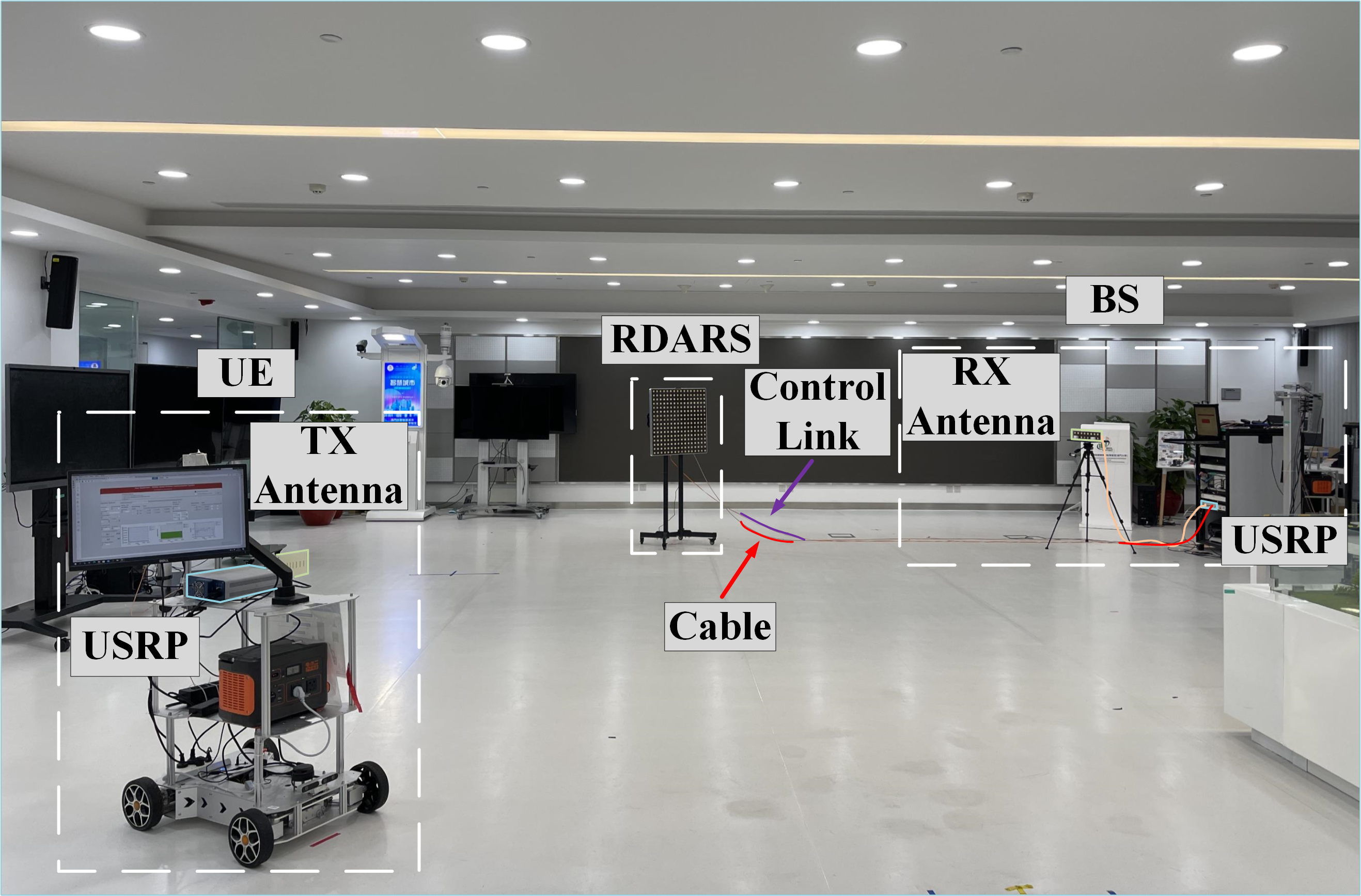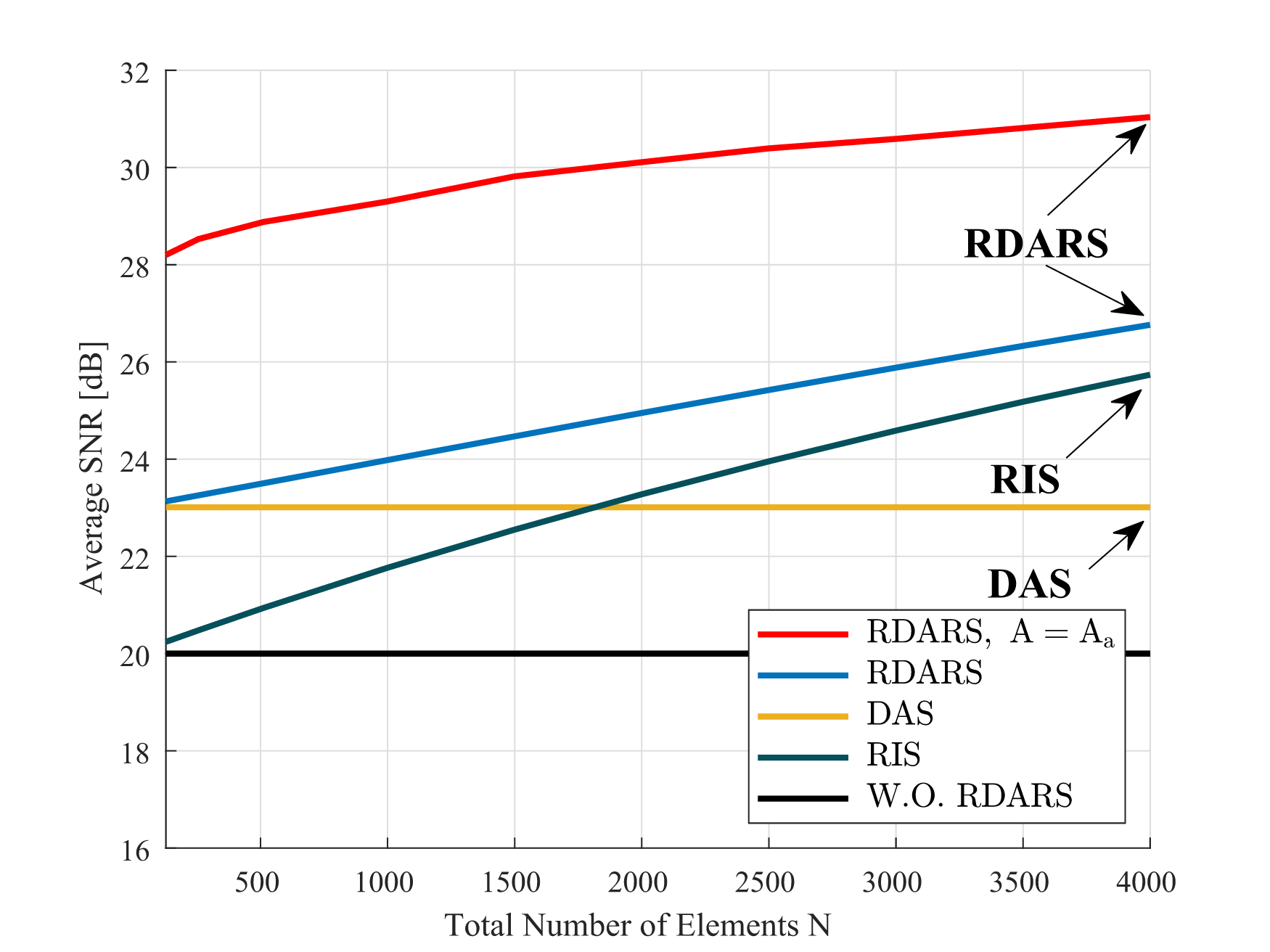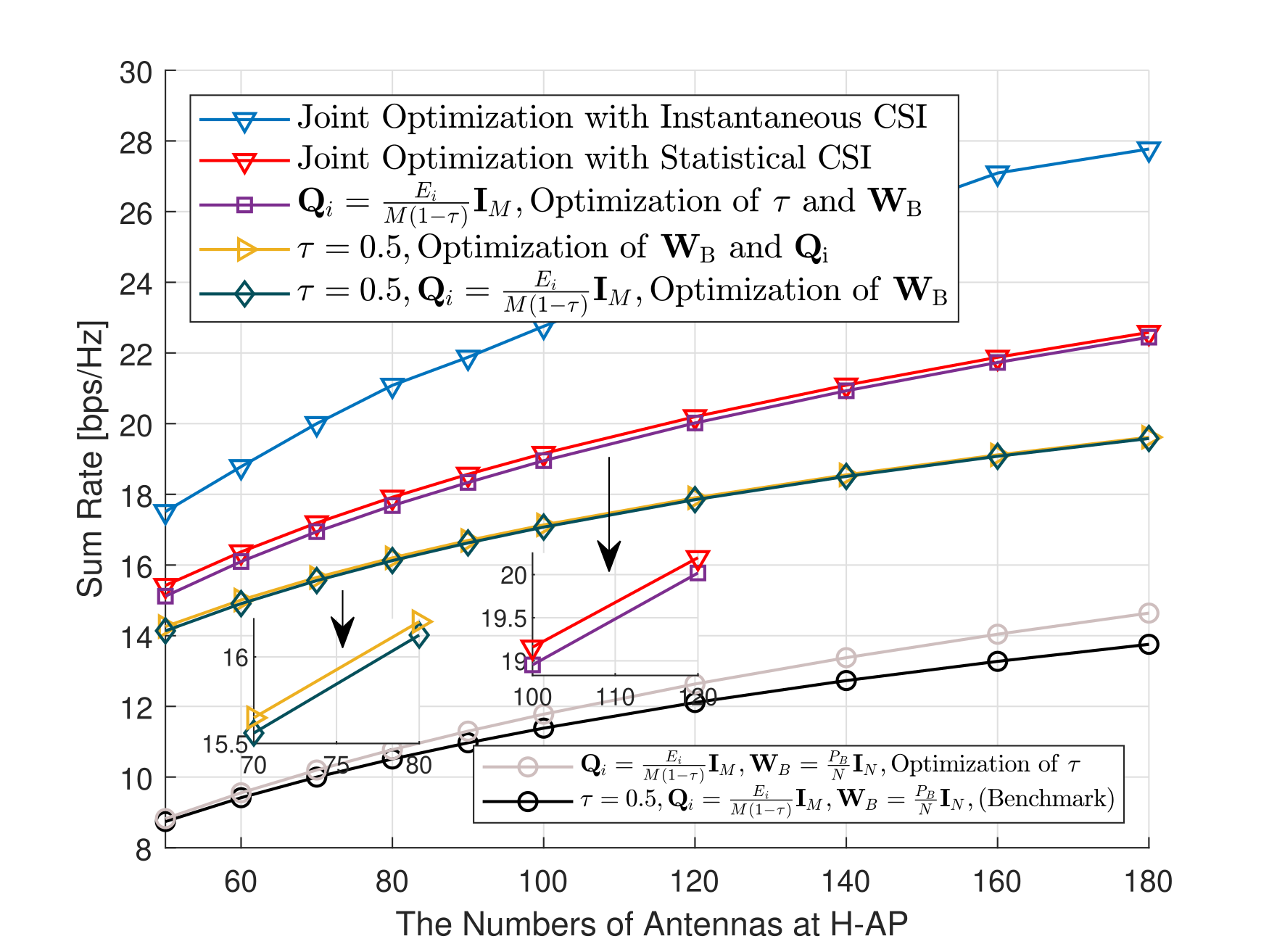Research Projects
- AI-Driven Intelligent 6G Wireless Communications: Theory and Technology
- Student Investigator, in charge of the design of vision-aided beem steering prototype realization.
- Funded by National Natural Science Foundation of China (NSFC) and the Macao Science and Technology Development Fund (FDCT) under Grant 0087/2022/AFJ.
- Analysis and Optimal Design of Reconfigurable Distributed Antennas and Reflecting Surface (RDARS) for 6G
- Student Investigator, in charge of verifying the performance of the RDARS-aided system with both theoretical analysis and experimental results.
- Funded by The University of Macau under Grant MYRG-GRG2023-00116-FST-UMDF.
Research Topics
- Topic 1: RDARS empowered wireless communication system
- Description: To support the stringent performance requirements of future 6th generation (6G) mobile networks, we first proposed a novel architecture called “Reconfigurable Distributed Antennas and Reflecting Surface (RDARS)”. Such a architecture embedded with the merits of both the distributed antenna system (DAS) and antenna selection technique with inherent macro-diversity and selection diversity, as well as the concept of ``reconfigurability” introduced by reconfigurable intelligent surface (RIS) to customize the wireless channel. To unveil the potential of such a architecture, we characterized the performance of the RDARS-aided wireless communication system with soild theoretical analysis, and then provided rigorous proof to demonstrate its superiority in terms of performance enhancement. We then built up a real RDARS-aided wireless communication demo for experiments using a fabricated RDARS’s prototype. Experimental results validate the performance enhancement introduced by the RDARS.



- Topic 2: Massive MIMO empowered wireless powered sensor networks
- Description: Wireless energy transfer (WET) has been anticipated as a viable solution to combat the challenges of scarce energy supply in Internet-of-Things (IoT) applications. To reap the benefit brought by large scale antenna arrays, massive multiple-input-multiple-out (MIMO) empowered wireless powered sensor networks (WPSNs) is investigated to meet the urgent demand for reliable and self-sustainable IoT applications. Considering a large-scale antenna array deployed at the access point for energy transfer to and information collection from the multiple-antenna wireless powered sensors, the “hardening property” in energy transfer is generalized and theoretically proved based on random matrix theory. Based on the hardening properties, the harvesting energy and the uplink sum-rate for sensor data collection are found to be asymptotically deterministic and depend on the statistical channel state information (CSI) only. The “hardening properties” in both energy and information transfers enable a novel optimal design on the WPSNs based on statistical CSI only. As a result, different from prior WPSNs designs, statistical CSI but not instantaneous CSI is exploited and frequent channel estimation and heavy communication overhead can be avoided with a much lower computation complexity, thus improving the practicability and sustainability of the WPSNs. The effectiveness of the proposed design is finally demonstrated by numerical simulations.





